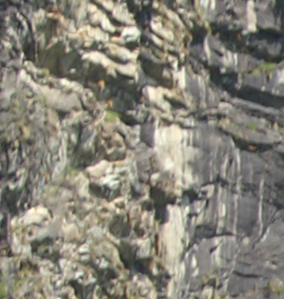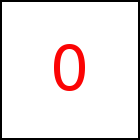Multiple Triangle Animations - taccGL™ Tutorial
Sawtooth Animations

The following animations can be used to rip-apart an HTML element leaving a saw like edge.
It is possible to use right-angled triangles as in the first example or equilateral triangles.
The latter, however, require one side to include one more triangle, which is added using ml.add
in the fourth example.
taccgl.ma('ex80',taccgl.triangle) . paint(). hide() .sliceH(4) .clipR(1,1,-1,0,0,-1). from ({ox:200}). dur(3) .union ( taccgl.ma('ex80',taccgl.triangle) . visAtEnd() .sliceH(4) . from ({ox:-200}) .dur(3)) . start(); | RUN |
taccgl.ma('ex80',taccgl.triangle) . paint(). hide() .sliceH(10) .clipR(1,1,-1,0,0,-1). from ({ox:200}). dur(3) .union ( taccgl.ma('ex80',taccgl.triangle) . visAtEnd() .sliceH(10) . from ({ox:-200}) .dur(3)) . start(); | RUN |
taccgl.ma('ex80',taccgl.triangle) . paint(). hide() .sliceH(4) .clipR(1,0,-1,0.5,0,1). from ({ox:200}). dur(3) .union ( taccgl.ma('ex80',taccgl.triangle) . visAtEnd() .sliceH(4) . clipR(0,0.5,1,0.5,0,1). from ({ox:-200}) .dur(3)) . start(); | RUN |
var mr = taccgl.ma('ex80',taccgl.triangle) . paint(). hide() .sliceH(4) .clipR(1,0,-1,0.5,0,1). from ({ox:200}); var ml = taccgl.ma('ex80',taccgl.triangle) . visAtEnd() .sliceH(4) . clipR(0,0.5,1,0.5,0,1); ml.add ( ml.ar[0].clone(). clipR(0,-0.5,1,-0.5,0,0.5) ); ml.from ({ox:-200}); ml.union(mr). vEnd (0,0,0). dur(3) . start(); | RUN |
Triangle Rotations

The following examples demonstrate using both sliceH and sliceV on triangles:
The original element is split into rectangles and of each rectangle the upper left triangle is shown.
Idea of the following samples is to clone the resulting set and used clipR to select
the right bottom triangle. Then the sets are unified and processed as a single set.
var m = taccgl.ma('ex90',taccgl.triangle) . paint(). hide(). visFinal() .sliceH(4) .sliceV(4); m.union (m.clone() .clipR(1,1,-1,0,0,-1)); m. sequence(3) . start(); | RUN |
var m = taccgl.ma('ex90',taccgl.triangle) . paint(). hide(). visFinal() .sliceH(4) .sliceV(4). to({ox:200,oy:-200}); var n=m.clone().clipR(1,1,-1,0,0,-1).to({ox:-200,oy:200}); m.union (n); m. dur(5). start(); | RUN |
var m = taccgl.ma('ex90',taccgl.triangle) . paint(). hide(). visFinal() .sliceH(4) .sliceV(4); var n=m.clone().clipR(1,1,-1,0,0,-1); m.union (n); var b= taccgl.bb('ex90'); m.to (b.x,b.y,0). rotate(b.x+b.w/2,b.y+b.h/2,0, 0,0,1); m.mp( (t,i) => {t.rotatePart(0,Math.PI*(i%16)/8)} ); m. dur(1). start(); l=m.cont(). rotate(b.x+b.w/2,b.y+b.h/2,0, 0,0,1) . dur(2). start(); | RUN |
var m = taccgl.ma('ex90',taccgl.triangle) . paint(). hide(). visFinal() .sliceH(16) .sliceV(16); var n=m.clone().clipR(1,1,-1,0,0,-1); m.union (n); var b= taccgl.bb('ex90'); m.to (b.x,b.y,0). rotate(b.x+b.w/2,b.y+b.h/2,0, 0,0,1); m.mp( (t,i) => {t.rotatePart(0,Math.PI*(i%256)/128)} ); m. dur(1). start(); l=m.cont(). rotate(b.x+b.w/2,b.y+b.h/2,0, 0,0,1) . dur(2). start(); | RUN |
Splinter Animations
taccgl.ma('ex100',taccgl.triangle) . paint(). hide(). visFinal(). showbefore() . sliceH(4) .sliceV(4) . alpha(1,0). mp ( t=>{t . to({ox:600*Math.random()-300,oy:600*Math.random()-300}) } ) . start(); | RUN |
taccgl.ma('ex100',taccgl.triangle) . paint(). hide(). visFinal(). showbefore() . sliceH(24) .sliceV(24) . alpha(1,-0.3). dur(2). mp ( t=>{t . to({ox:2000*Math.random()-1000,oy:2000*Math.random()-1000}).posZ(0,4000).vEnd(0,0,0) } ) .start(); | RUN |
taccgl.ma('ex100',taccgl.triangle2) . paint(). hide(). visFinal(). showbefore() . sliceH(100) .sliceV(100) . alpha(1,0). dur(0.5) . mp ( t=>{t . to({ox:1000*Math.random()-500,oy:1000*Math.random()-500}).vEnd(0,0,0) } ) . start(); | RUN |

There are many versions of splinter animations presented. The
above three examples work with the top left triangles only while
the other examples use clone and union as described in the
previous section.
Basic idea is to use an accelerated motion animation with a random
target position. In order to use random on each individual
piece, mp must be used.
Some of the examples below use a random startTime which gives the animation a kind of delayed start.
Others add a rotation effect.
var m=taccgl.ma('ex100',taccgl.triangle) . paint(). hide(). visFinal(). showbefore() . sliceH(24) .sliceV(24); var n=m.clone().clipR(1,1,-1,0,0,-1); m.union (n); m . alpha(1,-0.3). dur(2) . mp ( t=>{t.to({ox:2000*Math.random()-1000,oy:2000*Math.random()-1000}) . posZ(0,4000) . vEnd(0,0,0) } ) . start(); | RUN |
var m=taccgl.ma('ex100',taccgl.triangle) . paint(). hide(). visFinal(). showbefore() . sliceH(24) .sliceV(24); var n=m.clone().clipR(1,1,-1,0,0,-1); m.union (n); m . alpha(1,-0.3). dur(2). mp ( t=>{t.startTime(Math.random()*1) .to({ox:2000*Math.random()-1000,oy:2000*Math.random()-1000}).posZ(0,4000).vEnd(0,0,0) } ). start(); | RUN |
var m=taccgl.ma('ex100',taccgl.triangle) . paint(). hide(). visFinal(). showbefore() . sliceH(24) .sliceV(24); var n=m.clone().clipR(1,1,-1,0,0,-1); m.union (n); m . alpha(1,-0.3). dur(2). mp ( t=>{t.startTime(Math.random()*1) .to({ox:2000*Math.random()-1000,oy:2000*Math.random()-1000}).posZ(0,4000). rotateMiddle(0,0,1) .vEnd(0,0,0) } ) . start(); | RUN |
var m=taccgl.ma('ex100',taccgl.triangle) . paint(). hide(). visFinal(). showbefore() . sliceH(12) .sliceV(12); var n=m.clone().clipR(1,1,-1,0,0,-1); m.union (n); m . alpha(1,-0.3). dur(2). mp ( t=>{t.startTime(Math.random()*1) .to({ox:2000*Math.random()-1000,oy:2000*Math.random()-1000}).posZ(0,4000). rotateMiddle(0,0,1) .vEnd(0,0,0) } ) . start(); | RUN |

Above examples use vEnd(0,0,0) while the 2 examples below use vBegin with quite high
random values to create more like an explosion effect. In all, but especially these a negative value second
parameter for alpha is used to fade out a not so nice looking ending of the animation.
var m=taccgl.ma('ex110',taccgl.triangle) . paint(). hide(). visFinal(). showbefore() . sliceH(4) .sliceV(4); var n=m.clone().clipR(1,1,-1,0,0,-1); m.union (n); m . alpha(1,-0.3). dur(2). mp ( t=>{t.startTime(Math.random()*1) .to({ox:2000*Math.random()-1000,oy:2000*Math.random()-1000}).posZ(0,4000). rotateMiddle(0,0,1) .vEnd(0,0,0) }) . start(); | RUN |
var m=taccgl.ma('ex110',taccgl.triangle) . paint(). hide(). visFinal(). showbefore() . sliceH(24) .sliceV(24); var n=m.clone().clipR(1,1,-1,0,0,-1); m.union (n); m . alpha(1,-0.3). dur(2). mp ( t=>{t . to({ox:2000*Math.random()-1000,oy:2000*Math.random()-1000}).posZ(0,4000). rotateMiddle(0,0,1) .vBegin(2000*Math.random()-1000,2000*Math.random()-3000,2000) } ) . start(); | RUN |
var m=taccgl.ma('ex110',taccgl.triangle) . paint(). hide(). visFinal(). showbefore() . sliceH(24) .sliceV(24); var n=m.clone().clipR(1,1,-1,0,0,-1); m.union (n); m . alpha(1,-0.3). dur(2). mp ( t=>{t . to({ox:2000*Math.random()-1000,oy:2000*Math.random()-1000}).posZ(0,4000). rotateMiddle(0,0,1) .vBegin(2000*Math.random()-1000,2000*Math.random()-4000,4000) } ) . start(); | RUN |
WebGL™ is a trademark of the Khronos Group Inc.
|





